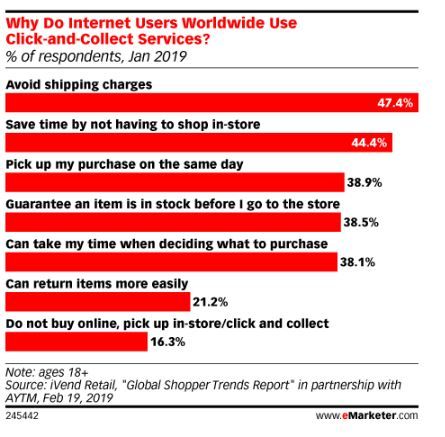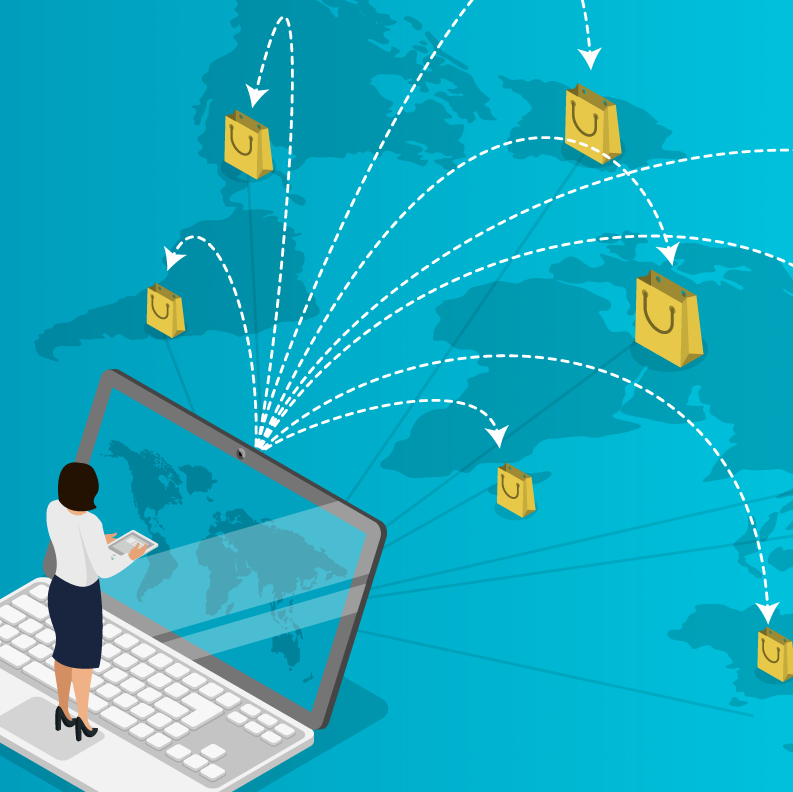With back-to-school shopping coming to a close, retailers redirect their efforts toward one of retail’s biggest shopping seasons — the Q4 holidays. In years past, much of the focus for online US-based retailers has been around the Cyber Five weekend (Thanksgiving through Cyber Monday) and the Christmas holiday. These key dates will continue being a staple that you cannot and should not avoid, but other global holidays are paying massive dividends for those venturing into the international scene.
| Time Frame | Global Holiday | 2018 Online Revenue (Est.) |
| October or November | India – Diwali | $4.3 billion |
| November 11 | China – Singles Day | $30.8 billion |
| November | Mexico – El Buen Fin | $750 million |
| November | US – Black Friday | $6.22 billion |
| November | US – Cyber Monday | $7.9 billion |
Before taking a deep dive into these “new” retail opportunities, it is critical that you do not assume a one-size-fits-all strategy when going global. Doing so can result in unmet expectations and discourage further exploration of global retail. Create a scalable strategy, start as early as possible and test as much as possible. We have laid out some guidelines as you begin planning.
Be strategic by starting small.
Let’s face it: Expanding to every country and expecting significant ROI for Q4 is a tall order. Assessing product interests is a great way to narrow down which countries make expansion sensible. Leverage free tools such as Google Trends when researching. If you are already selling in the US, targeting lookalike markets is another viable option. For example, if you are selling tech products, countries such as Australia, the UK and Saudi Arabia are great markets whose consumers exhibit similar tastes and shopping behaviors to that of the US consumer. Next, identify gaps between your business and the consumer demand for that target market. Who are your competitors? What should be your price point?
Clearly communicate your shipping offers — and meet them.
Timely delivery, a seamless returns process and exceptional customer service drive branding and garner repeat buyers. But how that looks within each country is different. European consumers, for example, have embraced the click-and-collect method. They simply purchase online and collect their purchase in the store or at a participating location. Retailers penetrating this market understand that the click-and-collect method is a valuable aspect to the retail shopping experience because of its speed and convenience. Additionally, this is especially appealing to budget-conscious shoppers who want to avoid shipping charges. Contrast this to the US, where the majority still prefers direct home delivery.


Either way, clearly communicate shipping methods, times and costs from the start. Fast shipping does not always equal free. Free shipping does not always equal fast.
It is important to offer your customers a wide variety of shipping options. There is no need to offer fast shipping if it is not something your customers are demanding. However, in this case, offering free shipping is advisable. As a particular global holiday approaches, you want to consider offering faster shipping options for last-minute shoppers. If it makes financial sense, then consider offering free expedited shipping. Including free shipping can be presented in many forms. For example, you can offer free shipping on a single item or offer it once a customer hits a spending threshold.
By providing a variety of shipping options, you empower your customers to make the best choices for themselves.
“Glocalize” your approach — on everything.
Tailoring your business to meet the needs of your international consumers is a significant part of creating a successful globalization strategy. A marketing campaign might be well received in one part of the world, but can send a completely different message in another part. Localizing for regions is much more than just translating content for websites and apps — it means focusing on local phrasing, terminology and features according to the cultural norms. Keep this in mind when creating intuitive and personalized listings, storefronts and landing pages. The goal is to facilitate seamless shopping experiences, because they are not only the table stakes for international commerce but also will help improve your chances of converting sales. This is just one part of laying a proper foundation. The next layer involves piecing together the right mix of promotional strategies.
While you research lookalike markets, you may wonder if retailers in other countries promote products the same way as in the US? The answer is both yes and no. Yes in the sense that the marketing practices used are similar, but no in the sense that selecting the best combination for a region can be challenging. Some markets utilize online promotions leveraging mobile and social media for outreach. Other regions prefer printed materials or physical events where both retailer and customer can connect. When putting together a strategy, it’s best to research, test and optimize as you go.
Consider this: Advertising discounted pricing on tech products is crucial to increasing conversions in Australia and the UK. Contrast this to the purchasing habits of the Saudis who buy tech products regardless of price, provided there is a wide variety of consumer electronics and computer components being promoted.
Seek established partners that bridge gaps and help you avoid common pitfalls.
By now, you may be thinking that selling internationally is filled with complexities that far outweigh the benefits, even during key holiday seasons. Despite the hurdles, cross-border e-commerce is booming. It is estimated that 35% of consumers currently shop on sites based outside their home country. In 2020, international transactions are projected to reach nearly $1 trillion, up 20% from 2019.
How are sellers removing complexity and making the most of these opportunities?
Online marketplaces and their networks of specialized partners have made international e-commerce less convoluted. They are a popular solution because they have historically reduced the complexities. Sellers can tap into different services ranging from marketing to operations to logistics that comes with the partnership. The most compelling benefit is the immediate access to an established customer base. It means less investment dollars being spent on customer acquisition, nurturing, converting, and retaining. This is easily one of the biggest hurdles and it’s quickly removed with the marketplace model.
Looking for more insights you can use to get a bigger competitive advantage in Q4 2019? We have plenty! Leading experts go into greater detail on each of the above trends and strategies in our recent webinar. Watch it on demand now for practical suggestions from Rithum, ShipStation and Newegg.
—
This blog was contributed by Mark Barlis, Sr. Marketing Manager for Newegg Marketplace, the leading global tech marketplace with a presence in over 80 countries. Newegg Marketplace offers brands and retailers alike a robust e-commerce platform and operations suite to maximize their revenue and branding goals on a global scale.



